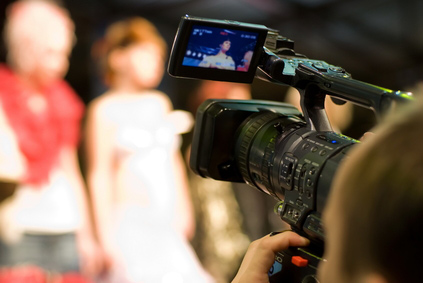 When your small business releases videos online, they reflect more than the information they contain. Video quality reflects on your company's brand and character. Poor production quality is often interpreted as carelessness, when the real culprit is usually just a small budget and novice filmmaker with good intentions.
When your small business releases videos online, they reflect more than the information they contain. Video quality reflects on your company's brand and character. Poor production quality is often interpreted as carelessness, when the real culprit is usually just a small budget and novice filmmaker with good intentions.
Before you upload your next video, make sure it goes viral for the all the right reasons with these simple Hollywood tips and tricks.
Tight Edits
Getting your content filmed is just the beginning of the journey. Invest time in thoroughly editing your footage. And if you're new to videos and editing, check out some beginner video editing software. How many times have you gotten bored with a video and navigated away from it because it took too long to get to the point? Don't be that guy. Make sure every second of your video serves a purpose. In this era of shortened attention spans, you can't afford gratuitous pauses or long-winded introductions. Be honest and ruthless in the editing bay.
Clever Camera Angles
Make the ordinary extraordinary by choosing a clever camera angle. Many amateur cinematographers will shoot something dead-on at eye-level. Don't fall into this trap. Director Michael Bay is a genius when it comes to choosing where to place a camera to give the viewer the best experience. Director Bay went so far as to invent (well, heavily modify) a vehicle to capture car chases and collisions without damaging cameras. You probably can't justify that sort of hit to your budget but you can experiment with your eye and the camera to see what angle will make your shot more interesting and compelling.
Keep Your Audio Clean
All the thoughtful camera angles and tight editing can't save your video from audio quality qualms. You certainly won't want to attempt to dub (add or re-record sound to) your video in post-production so you'll have to be diligent while you shoot. When ambient noise overpowers dialogue, you have a problem. Solve it by using lavalier mics (they clip onto your shirt) or a boom microphone (someone holds it above or below the speaker so it isn't visible on camera.
Finding the right mix of camera and microphones doesn't have to be expensive but you do have to get it right. Run plenty of tests for correct setup and levels before you start shooting. You probably won't appreciate the importance of this unless you get it wrong sometime, but trust us, it's really important.
Depth of Field
Ready to take it to the next level? Depth of field is really important to helping an audience focus. Imagine a soap opera or daytime talk show. Generally everything in the frame is in crisp focus. This is what pros say “video” looks like. In Hollywood films like Michael Bay movies you rarely see a shot with every element (all the way to the horizon) in focus. By choosing what is in focus and what isn't you are telling the audience what is important and where to look.
Since depth of field controls what is in focus, it also helps you optimize your set (the place you're shooting) for your video. If you are shooting in your office, for example, and you use a short depth of field you will get the impression of an office without being able to read the post it notes on computer monitors. Not every camera will let you master depth of field, but if you can control it at all do try to take advantage of this feature.
Lighting Like a Pro
Hollywood stars know that the Lighting Designer can be their very best friend or worst enemy on set. Good lighting makes people look good on camera. Bad lighting can negate all the hard work you've put into your hair or makeup and make you look sickly.
Office-park standard fluorescent lighting looks terrible on camera, it tends to emit green light and the ballasts make the lighting look flickery, like you're in a horror movie. Fluorescents with electronic ballasts and natural color tubes, however, will work fine for ambient lighting. Lighting that's lightly tinted pink or warm-hued is ideal but often unachievable for budget filmmakers. If your camera has an option to “white balance” you should use it every time you turn on the camcorder or set up a new shot.
Finally, remember that light is boring without shadows. For well-lit subjects without over lighting the entire environment follow the three-point rule:
- A key light should light the subject's face from a slightly off-set angle.
- A fill light should be set on the side of the subject and fill in any shadows from the key light.
- A hair light should be placed above and behind the subject (often throwing far less light than the key or fill) to compliment the subject and add visual interest. If your eye is drawn to it, turn it down.
We realize we've just scratched the surface, so don't be afraid to do more research! Do you have any handy tips that have worked for you? We'd love to hear about them in the comments.
